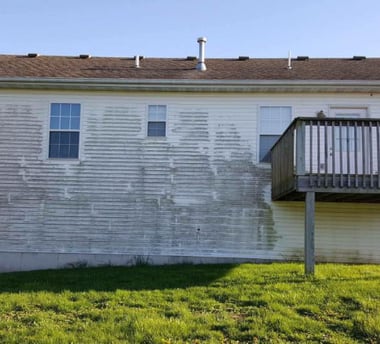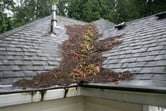Unveiling the Intricacies: Understanding Why Mold Thrives on Siding and Roofs
11/15/20233 min read


Mold, the silent intruder, has a knack for finding its way onto our siding and roofs, creating not only an eyesore but also potential hazards to our homes. In this comprehensive blog post, we delve into the intricate reasons behind mold growth on siding and roofs, unraveling the factors that attract this unwelcome visitor and exploring its impact on both the structural integrity of our homes and the quality of indoor air.
Understanding Mold:
Mold is a type of fungus that reproduces through spores. It thrives in damp and humid conditions, making our homes susceptible to its colonization. While it serves crucial roles in the environment, its presence indoors can lead to a variety of health issues and structural concerns.
Why Mold Grows on Siding:
Moisture Accumulation: Siding, constantly exposed to the elements, can accumulate moisture from rain, dew, or humidity. Areas with poor drainage or improper ventilation create the ideal environment for mold to take root.
Lack of Sunlight: Mold flourishes in darkness. Shaded or north-facing sides of a building often receive less sunlight, providing the perfect conditions for mold growth. This is why mold is frequently found on the sides of a structure that receive less direct sunlight.
Organic Matter: Siding made of organic materials, such as wood or certain types of composite materials, provides a food source for mold. The presence of organic matter on the siding, such as accumulated dirt or debris, can further encourage mold growth.
Improper Maintenance: Neglected siding is more prone to mold. Regular cleaning and maintenance, including removing dirt and debris, can significantly reduce the risk of mold infestation.
Why Mold Grows on Roofs:
Moss and Algae Accumulation: Moss and algae, attracted to the moisture on roofs, create a conducive environment for mold growth. Their presence can also compromise the structural integrity of the roof, facilitating water retention and mold development.
Clogged Gutters: Clogged gutters impede proper water drainage, leading to water pooling on the roof. This stagnant water provides an ideal breeding ground for mold. Regular gutter cleaning is essential to prevent this issue.
Overhanging Trees: Branches overhanging the roof can create shade and trap moisture, fostering mold growth. Trimming branches away from the roof can mitigate this risk.
Improper Ventilation: Inadequate roof ventilation can trap moisture in the attic and under the roofing material. This trapped moisture becomes a breeding ground for mold. Proper ventilation systems are crucial in preventing mold growth on roofs.
The Impact of Mold on Structures and Indoor Air Quality:
Structural Deterioration: Mold is not only an aesthetic concern; it can significantly compromise the structural integrity of your home. As it grows on siding and roofs, it infiltrates materials, causing decay and weakening the building's foundation over time.
Quality of Indoor Air: Mold spores can become airborne, infiltrating the indoor air of your home. Inhaling mold spores can lead to respiratory issues, allergies, and other health concerns. Maintaining a mold-free exterior is crucial to ensuring a healthy living environment inside your home.
Preventative Measures:
Regular Cleaning: Scheduled cleaning of siding and roofs helps remove accumulated dirt and debris, reducing the likelihood of mold growth.
Proper Ventilation: Ensuring proper ventilation in both the attic and roof space promotes air circulation, preventing moisture buildup.
Gutter Maintenance: Keeping gutters clear of debris ensures proper water drainage, minimizing the risk of water pooling on the roof.
Trimming Overhanging Branches: Pruning trees near the roof eliminates shade and reduces the risk of mold growth.
Conclusion:
In understanding the factors that attract mold to siding and roofs, we empower ourselves to take proactive measures in preventing its unwelcome presence. Regular maintenance, proper ventilation, and mindful landscaping are key components in the battle against mold, preserving not only the aesthetic appeal of our homes but also ensuring the longevity and health of our living spaces. Remember, a mold-free exterior not only protects your home's structure but also safeguards the quality of the air you breathe indoors.
You might also like
Contacts
curbappeal@curbappealps.com
(404) 290 - 3006


Curb Appeal Limited Co.


